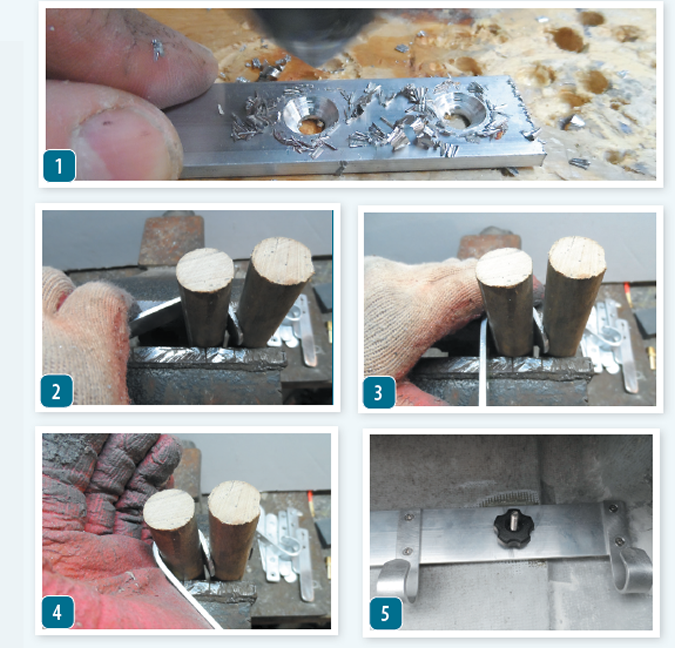It was a given that anything added to the cockpit locker of our F-24 test boat had to be quickly removable. All of the bolts for cockpit gear, fuel lines, and half of the wiring is accessed by worming through this narrow locker into the space under the cockpit, and any obstruction would render it inaccessible. Because the backside is the hull, through-bolting was not an option. The previous owner had epoxied on a few hooks, but gluing plastic to fiberglass is pretty hopeless and only the scars remained.
To create a modular and removable hook system, we mounted a pair of glue-on studs to each side (see PS July 2017), out of the way of bilge access. These support an 1/8-inch x 2-inch x 32-inch aluminum bar, to which we can attach whatever accessories we need. Because the bar is secured with knobs rather than nuts, the whole business can be removed in seconds without tools. Additionally, the bar, complete with accessories, can be fabricated at home, a boon to any boat project; all you need to know is the stud spacing.
The hooks themselves are a design weve used on a number of boats. Fabricated from 1/8-inch x -inch aluminum flat bar, they do not snag things you would rather they did not, and yet they hold line tenaciously, even when the boat rolls and slams. To make these, round the corners of a 5-inch section on a bench grinder, followed by polishing on a wire wheel. Drill and countersink for #8 fasteners. Bend to shape using a simple jig created by clamping two broomstick stubs in a bench vice about 1/8-inch apart. The gap should be just wide enough to admit the 3/8-inch slings that will be used to hang lines and PFDs; any wider and they will snag ropes and sail bags.
Instead of placing objects directly on the hooks, attach them via slings that are luggage tagged around the object. If the locker is deep, loops of variable length allow layered storage, with each hook capable of holding 1 to 3 items suspended from loops of graduated lengths. Up to 20 pounds of rope on each hook and 100 pounds total on the strip is not excessive. In this way, considerable volumes of ropes, fenders, and PFDs can be stored in a deep locker without tangles and without anything becoming lost.

































